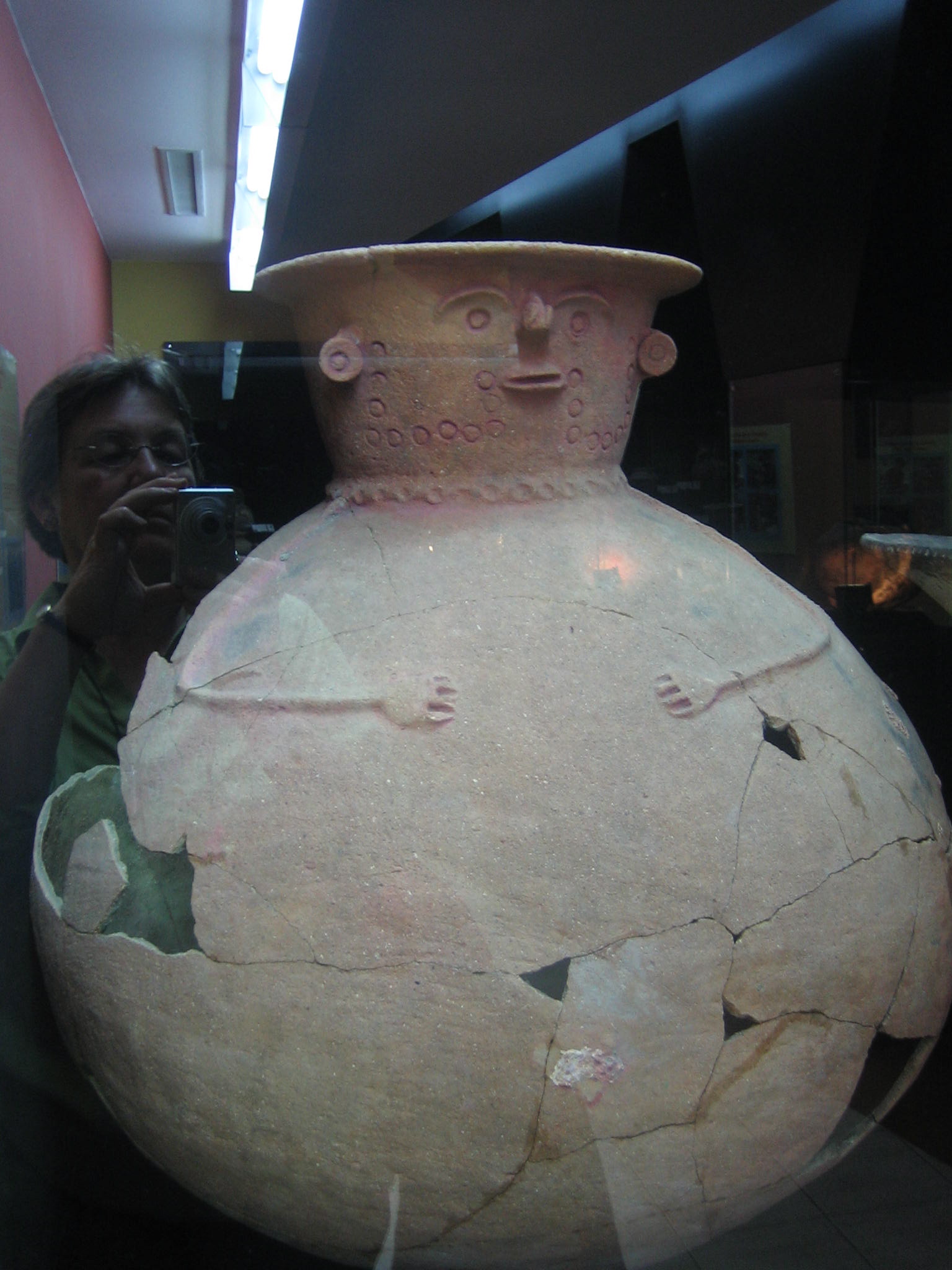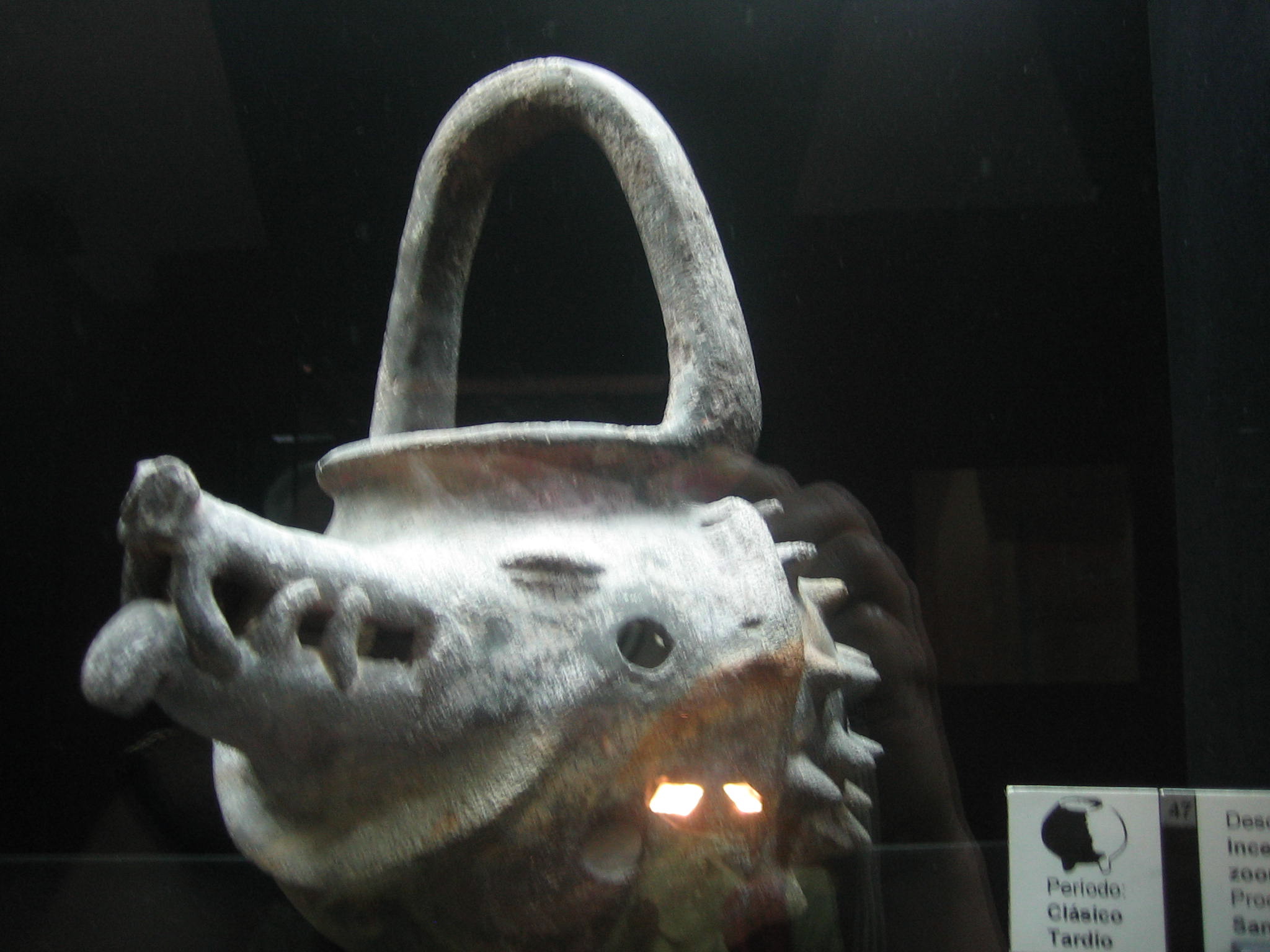September 24, 2006 - 21:10

 This weekend, Jeff and I took a jaunt to Atitlan, and had our breath taken away by “the most beautiful lake in the world.” We also had our brains twisted around by the realization that
This weekend, Jeff and I took a jaunt to Atitlan, and had our breath taken away by “the most beautiful lake in the world.” We also had our brains twisted around by the realization that
- the archeologists who have excavated pottery from the lake bottom have turned up a series of the most surreal, laugh-out-loud items (see right and below...)
- this tremendous lake was formed by a huge volcanic eruption 85,000 years ago, one that sent ash as far away as Florida; and
- geologists only figured this out in 1980 (why does this please me so? –-as evidence of the ever-evolving nature of knowledge and story-telling; the guy whose theory was overturned said that he was glad there were young whippersnappers to prove him wrong!)
So—turns out I wasn’t taking the decided turn in my reading I expected, this weekend, when I went from the graphic political work of Rigoberta Minchú to the magical realism of Guatemala’s Nobel laureate, Miguel Angel Asturias. Asturias’ work mixes socialist realism and magical realism, the mythically universal and the particularly Guatemaletecan. It’s been described as a sort of “science fiction in reverse.” The collection I started with, The Mirror of Lida Sal: Tales Based on Mayan Myths & Guatemalan Legends, opens with a particularly evocative “Portico,” that draws the reader into the stories as into a Mayan ruin buried deep in the jungle: “Between the kernel of corn and the sovereign sun seethes the carbonized reality of the dream.”

As Asturias describes it, the nature of this “carbonized reality” is that of a communal dream, and the waking lives of individuals are merely stolen representations of what lies beyond:
Put that in your pipe and smoke it: we are both “carbonized reality” and “hallucinating vegetables…”

Comments
nice photos from Panajachel
Submitted by Jerry (not verified) on October 27, 2006 - 15:29 Permalink